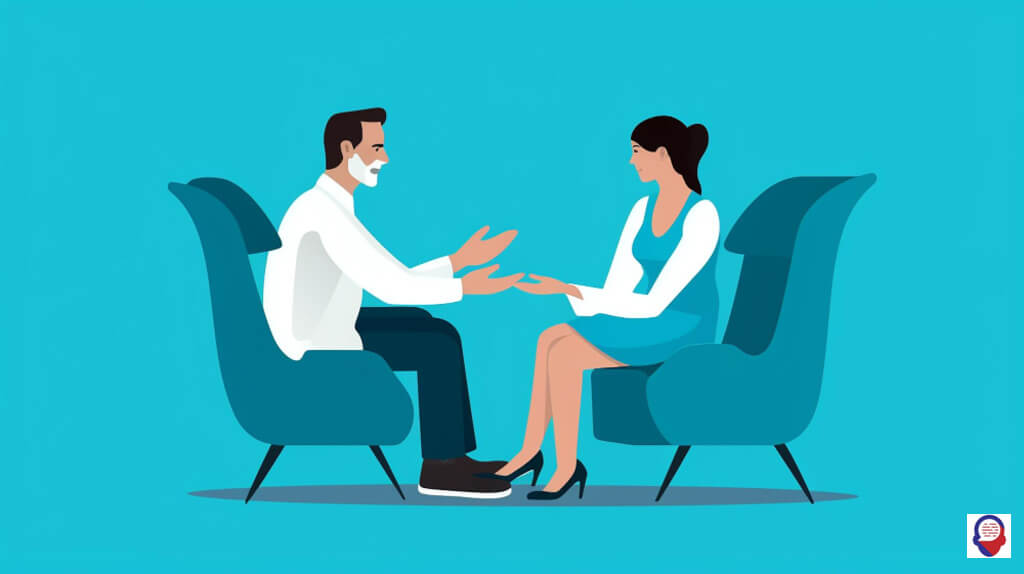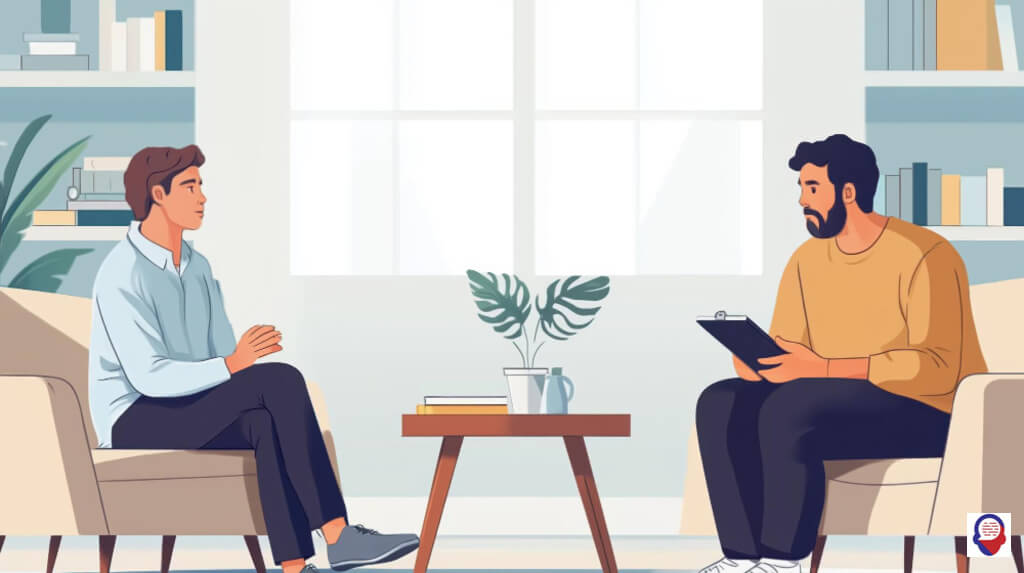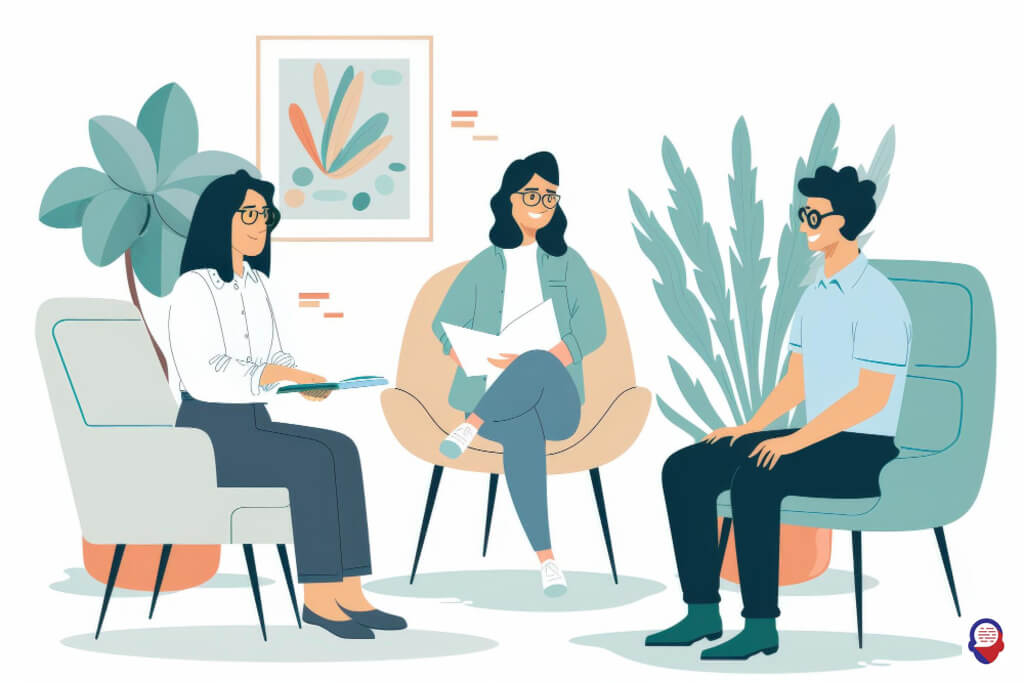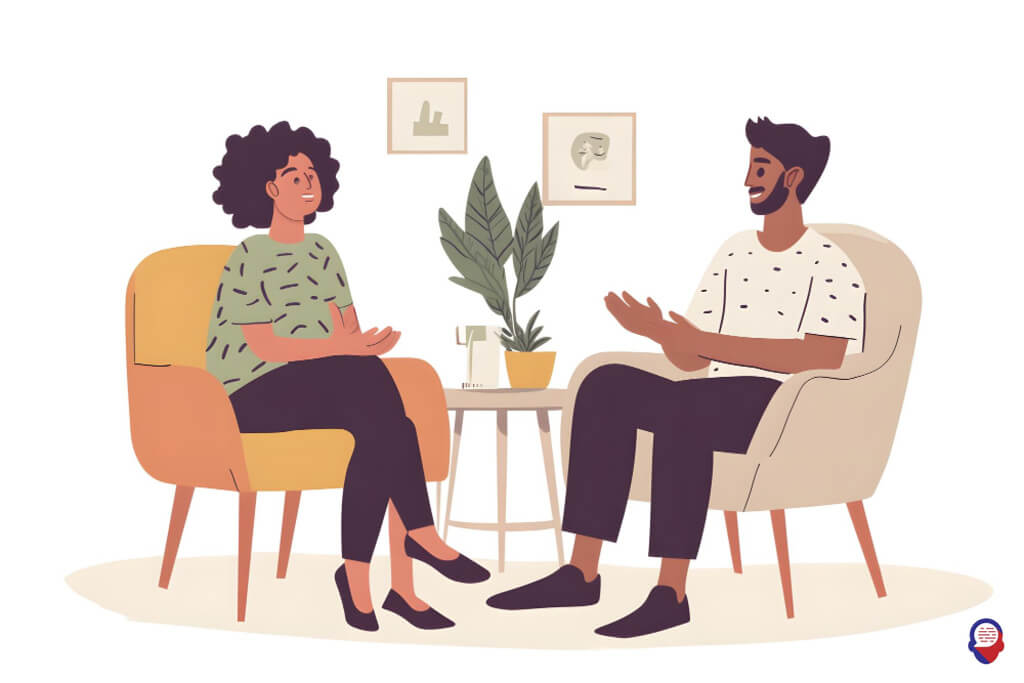Master Your Moment: Using CBT for Performance Anxiety
That feeling. You know the one. It starts as a faint flutter in your stomach, a tiny seed of doubt planted in the fertile ground of your mind. Then, as the moment of performance draws near, it grows. The flutter becomes a churning storm, your palms grow slick with sweat, and your heart begins a frantic, chaotic drumbeat against your ribs. This is performance anxiety, and it can feel like an insurmountable wall between you and your goals. But what if you had a blueprint to dismantle that wall, brick by brick?
Cognitive Behavioural Therapy, or CBT, is that blueprint. It’s not about magic or wishful thinking. It is a practical, evidence-based approach that empowers you to understand and change the very patterns of thought and behaviour that give anxiety its power. This is a journey into how CBT can help you reclaim your confidence, master your moment, and perform at your best, not in the absence of fear, but in spite of it.

What Exactly Is Performance Anxiety?
Performance anxiety is an intense fear or apprehension associated with performing a task in front of others. It’s a specific type of social anxiety where the fear is centred on the potential for scrutiny, judgment, and failure during a performance, leading to significant distress and avoidance.
This is far more than just a case of "the jitters." While a little nervousness can be motivating, performance anxiety is debilitating. It’s the fear that grips a student before an exam, rendering their mind blank despite hours of study. It’s the panic that seizes a musician backstage, making their fingers feel clumsy and foreign. It can affect athletes, public speakers, professionals in high-stakes meetings, and even individuals in social situations like a first date.
The experience is a triathlon of distress, involving physical, cognitive, and behavioural symptoms. Physically, your body’s alarm system, the fight-or-flight response, goes into overdrive. You might experience a racing heart, shortness of breath, trembling, sweating, nausea, or a dry mouth. Cognitively, your mind becomes a whirlwind of negative thoughts, predicting disaster and dwelling on every possible mistake. Behaviourally, the overwhelming urge is to escape or avoid the situation altogether.

Why Does Our Brain Create This Fear?
Your brain creates this fear because it misinterprets the performance situation as a genuine threat to your survival. This reaction is rooted in the primitive fight-or-flight response, a life-saving mechanism designed to protect you from predators, not presentations.
When you perceive a threat, a small region in your brain called the amygdala sounds the alarm. It triggers a cascade of stress hormones, like adrenaline and cortisol, that prepare your body for immediate, physical action. Your heart pumps faster to send blood to your muscles, your breathing quickens to increase oxygen intake, and your senses sharpen. This is incredibly useful if you need to run from a tiger, but profoundly unhelpful when you need to deliver a calm, coherent speech.
This powerful biological response is then amplified by your thoughts. Past negative experiences, such as being laughed at during a school play or failing an important test, can prime your brain to anticipate a similar outcome. Your internal monologue, filled with self-criticism and catastrophic predictions, convinces the amygdala that the danger is real and imminent. Over time, this creates a vicious cycle where the fear of the symptoms themselves becomes a primary source of anxiety.

How Can Cognitive Behavioural Therapy Help?
Cognitive Behavioural Therapy helps by teaching you to identify, challenge, and change the unhelpful thought patterns and behaviours that create and maintain performance anxiety. It operates on the fundamental principle that your thoughts, emotions, physical sensations, and actions are all interconnected and influence one another.
CBT provides a structured framework to break this cycle. Instead of being a passive victim of your anxiety, you become an active participant in your own recovery. The therapy is typically divided into two main components, the "cognitive" part and the "behavioural" part, which work in tandem to produce lasting change.
The cognitive component focuses on your thoughts. It helps you recognize the distorted thinking that fuels your fear, such as assuming the worst or disqualifying any positives. You learn practical skills to question these thoughts, evaluate them based on evidence, and develop more balanced and realistic perspectives.
The behavioural component addresses your actions. It focuses on gradually confronting the situations you fear, rather than avoiding them. Through systematic and supported exposure, you learn that you can handle the situation and that your feared outcomes are often unlikely or manageable. This builds real-world confidence and retrains your brain to no longer see the performance as a life-threatening event.

What Are the Key Cognitive Techniques in CBT?
The cognitive techniques in CBT are designed to act like a mental toolkit, giving you the instruments needed to dissect and reassemble your thought processes. These methods help you shift from being automatically controlled by your anxious thoughts to consciously choosing how you respond to them. The goal is to cultivate a more rational and supportive inner voice.

How Do You Identify Negative Automatic Thoughts?
You identify Negative Automatic Thoughts, or NATs, by learning to pay close attention to the internal commentary that pops into your head before and during a performance. These thoughts are often fleeting, feel like absolute truths, and trigger immediate emotional and physical reactions.
Think of NATs as the anxiety’s internal propaganda. They are short, sharp, and judgmental, often taking the form of predictions or self-evaluations. Common examples include "I’m going to forget everything," "Everyone will think I’m an idiot," "My voice will shake and they’ll all notice," or "I’m not good enough for this." They are called "automatic" because they appear without conscious effort, a knee-jerk reaction to the trigger of performing.
A core technique for catching these thoughts is the use of a thought record. This is a simple but powerful tool where you document the situation, the emotions you felt, and the specific automatic thoughts that occurred. By writing them down, you pull them out of the chaotic stream of consciousness and put them under a microscope, which is the first step toward challenging their validity.

What Is Cognitive Restructuring?
Cognitive restructuring is the process of actively questioning and challenging your negative automatic thoughts and then replacing them with more balanced and helpful alternatives. It is the methodical work of becoming your own thought-detective, examining the evidence for and against your anxious beliefs.
Once a NAT has been identified, you don’t simply try to ignore it or force yourself to "think positive." Instead, you engage with it critically. You might ask yourself a series of Socratic questions. What is the actual evidence that supports this thought? Is there any evidence that contradicts it? What is the worst that could realistically happen, and could I handle it? What is a more helpful or compassionate way of looking at this situation?
This process helps you see the cognitive distortions at play. You might be catastrophizing, blowing a small possibility way out of proportion. You might be engaging in mind-reading, assuming you know that others are judging you harshly. By systematically dismantling these distorted thoughts, you create space for a more rational perspective to emerge. This isn’t about lying to yourself; it’s about finding the objective truth.

How Can You Develop More Realistic Core Beliefs?
You can develop more realistic core beliefs by repeatedly applying cognitive restructuring techniques over time, which gradually weakens deep-seated, negative assumptions about yourself and the world. Core beliefs are the fundamental rules and conclusions you’ve drawn from your life experiences, and they often operate beneath the surface of your conscious thoughts.
While NATs are the surface-level chatter, core beliefs are the root system from which they grow. A core belief might be "I am incompetent," "I am unlovable," or "I must be perfect to be accepted." These powerful, global beliefs filter your perception of reality, causing you to interpret ambiguous events in a negative light and to generate a steady stream of consistent NATs.
Changing these beliefs is a longer-term goal of CBT. It involves gathering a portfolio of evidence that contradicts the old, negative belief. Each time you successfully challenge a NAT, handle a performance, or receive positive feedback, you are collecting data that supports a new, more adaptive core belief, such as "I am capable, even when I feel nervous," or "It is okay to be imperfect." This gradual process builds a more resilient and compassionate self-concept.

What Are the Essential Behavioural Strategies?
The behavioural strategies in CBT are the action-oriented part of the therapy. They are based on the understanding that changing what you do can directly change how you think and feel. These techniques are designed to break the cycle of avoidance and retrain your body’s response to feared situations, proving to your brain that you are safe.

Why Is Gradual Exposure So Effective?
Gradual exposure is so effective because it systematically desensitizes you to the source of your fear in a controlled and manageable way. It directly confronts the avoidance that maintains anxiety, teaching your brain through direct experience that the feared catastrophe does not happen.
The process involves creating an "exposure hierarchy." This is a list of performance-related situations ranked from least anxiety-provoking to most anxiety-provoking. You don’t jump into the deep end by starting with the most terrifying task. Instead, you begin with a small, achievable step that elicits only a mild level of anxiety.
For someone with public speaking anxiety, the first step might be simply reading a paragraph aloud while alone. The next could be rehearsing in front of a mirror, then recording themselves, then presenting to a single trusted friend. You only move to the next step on the hierarchy once your anxiety at the current level has significantly decreased. This gradual process builds momentum and confidence, proving to you at each stage that you can handle the feelings of anxiety and that they will eventually subside on their own.

How Do Relaxation Techniques Calm Your Body?
Relaxation techniques calm your body by directly counteracting the physiological symptoms of the fight-or-flight response. When you are anxious, your sympathetic nervous system is activated; relaxation techniques deliberately activate the parasympathetic nervous system, which is responsible for the "rest and digest" response.
Techniques like diaphragmatic breathing, also known as deep belly breathing, are central to this process. By taking slow, deep breaths that engage your diaphragm, you send a powerful signal to your brain that there is no immediate danger. This simple action can slow your heart rate, lower your blood pressure, and reduce the physical tension that accompanies anxiety.
Another powerful method is progressive muscle relaxation. This involves systematically tensing and then releasing different muscle groups throughout your body. This process not only releases physical tension but also increases your awareness of the difference between tension and relaxation, giving you a greater sense of control over your body’s physical state. Practicing these techniques regularly makes it easier to deploy them effectively in the moments before a performance.

Can Role-Playing and Rehearsal Make a Difference?
Role-playing and rehearsal can make a significant difference by allowing you to practice the performance in a safe, low-stakes environment. This builds both psychological confidence and procedural memory, making the actual performance feel more familiar and less intimidating.
Rehearsing your presentation, your musical piece, or your lines for a play helps to automate the task. The more you practice, the less cognitive effort is required during the actual event, freeing up mental resources to manage any anxiety that arises. It moves the skill from conscious thought to muscle memory, which is less likely to be disrupted by nerves.
Role-playing, often with a therapist or a trusted friend, allows you to practice not just the performance itself, but also how you will handle potential challenges. You can rehearse responding to questions, dealing with a mistake, or using your relaxation skills in the moment. This preparation demystifies the event and provides you with a concrete plan of action, which is a powerful antidote to the uncertainty that fuels performance anxiety.

How Do You Put It All Together?
You put it all together by engaging in a structured, collaborative process, typically guided by a therapist, that integrates both cognitive and behavioural techniques. The therapy is a partnership where you and your therapist work together to set clear goals, identify specific problems, and apply the tools of CBT systematically.
A typical course of CBT for performance anxiety begins with education. You learn about the nature of anxiety, the fight-or-flight response, and the CBT model of how thoughts, feelings, and behaviours are linked. This foundational knowledge helps demystify your experience and provides a rationale for the therapeutic work ahead.
Next, you move into the skills-building phase. You learn to identify your specific NATs and begin challenging them with cognitive restructuring. Simultaneously, you develop an exposure hierarchy and start tackling the behavioural experiments, beginning with less threatening situations. Relaxation techniques are taught and practiced, becoming a resource you can draw upon at any time.
A crucial element is "homework." CBT is not something that just happens for an hour a week in a therapist’s office. You are expected to practice the skills and carry out the behavioural experiments between sessions. This real-world application is where the most significant learning and change occur. Over time, as you become more adept at using the tools, you and your therapist will work on tackling more challenging performance situations until you have met your goals.

Is It Possible to Do CBT on Your Own?
Yes, it is possible to apply the principles of CBT on your own using self-help books, apps, and online resources, but working with a qualified therapist is highly recommended for the best outcome. The core concepts of CBT are accessible, and many people can benefit from learning to monitor their thoughts and gradually face their fears independently.
Self-directed CBT can be a good starting point, especially for milder forms of performance anxiety. It can provide valuable insights and practical strategies that you can implement immediately. Learning to use a thought record or practice deep breathing requires no special equipment and can be done by anyone with the motivation to try.
However, there are significant advantages to working with a professional. A therapist provides personalized guidance, helping you accurately identify your specific thought patterns and create a tailored exposure hierarchy that is both challenging and safe. They offer accountability, support, and the expertise to help you navigate roadblocks or deal with unexpectedly intense emotions that can arise during exposure work. For moderate to severe anxiety, professional guidance is essential for ensuring a safe and effective therapeutic process.
Frequently Asked Questions

How long does CBT take to work for performance anxiety?
The timeline for CBT varies from person to person, but it is designed to be a short-term therapy. Many people begin to see significant improvements within 8 to 20 sessions, with the exact duration depending on the severity of the anxiety, the complexity of the issues, and the individual’s commitment to practicing the skills between sessions.

Is medication ever used alongside CBT?
Yes, in some cases, medication may be used in conjunction with CBT to manage performance anxiety. A doctor or psychiatrist might prescribe medications like beta-blockers to control the physical symptoms (like a racing heart or trembling) or antidepressants for more pervasive anxiety. Combining medication and CBT can be highly effective, as medication can reduce symptoms enough to allow the person to more fully engage in the therapeutic work of CBT.
Can CBT help with physical symptoms like shaking or a racing heart?
Absolutely. CBT helps with physical symptoms in two primary ways. First, behavioural techniques like deep breathing and progressive muscle relaxation directly counteract the fight-or-flight response that causes these symptoms. Second, the cognitive work reduces the anxious thoughts that trigger the fight-or-flight response in the first place. As you learn that you are not in danger, your brain stops sounding the alarm, and the physical symptoms diminish.

What if my performance anxiety is for something non-traditional, like dating?
CBT is highly adaptable and can be effectively applied to a wide range of performance situations, including non-traditional ones like dating, job interviews, or difficult conversations. The underlying principles remain the same. The therapy would focus on identifying and challenging anxious thoughts about rejection or social judgment, and the behavioural component would involve gradual exposure to social situations that provoke anxiety.

***
Your story doesn’t have to be defined by fear. The moments that matter, the opportunities you want to seize, are within your reach. Taking that first step towards understanding and managing your anxiety is an act of profound strength.
At Counselling-uk, we provide a safe, confidential, and professional place to get advice and help with mental health issues. Our qualified therapists are here to offer support for all of life’s challenges, including performance anxiety. We can equip you with the proven tools of CBT, guiding you as you build the confidence to not just face your performance, but to master it. Reach out today, and let’s begin writing your next chapter, together.



